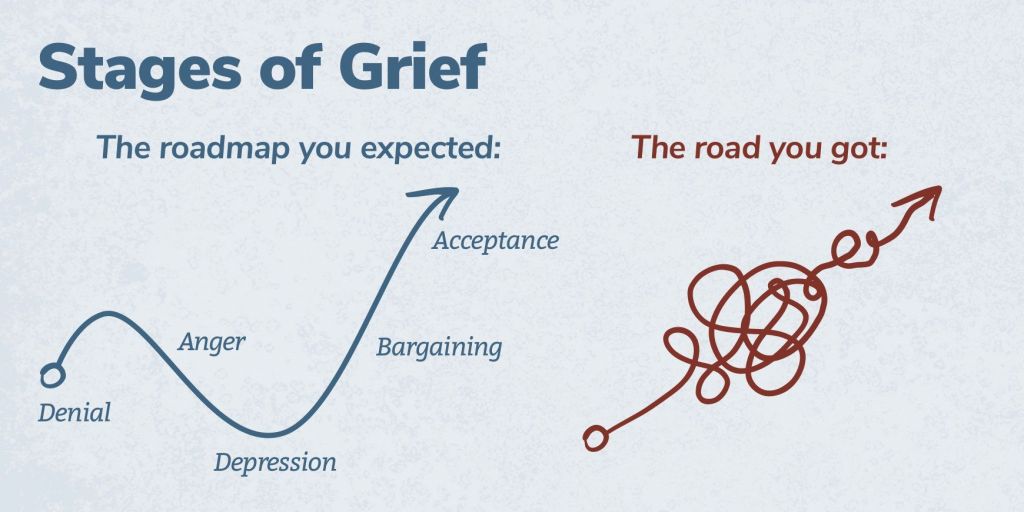There is no step-by-step process
The stages of grief were never intended to be a roadmap.

Dr. Elisabeth Kübler-Ross’ famous five stages of grief originated from her observations of terminally ill patients. Denial, anger, bargaining, depression, and acceptance reflect how people tend to cope with the reality of death and dying. While they may help us name some of our experiences with grief, they were never intended to be a step-by-step prescription for how to move forward.
There are really only two stages of grief, ... who you were before and who you are after.
—Ted Rynearson
The stages of grief were really there to help people understand the different types of reactions that someone might have in the aftermath of the death of a loved one. And although that's helpful sometimes, to be able to think about that in a more compartmentalized way, what we know is that there's not really a sequencing of those stages, that actually people can feel anger one minute, and denial the next minute, and that there's really no sequenced stages that we experience.
And also that everyone's grief is different, and that there's no right or wrong way to grieve, that grief can occur naturally, and can ebb and flow in waves, and that there really is not a staged model.
I think that, sometimes, having the stages of grief on people's mind can make them feel as though, maybe, someone isn't grieving in the right way, or that they should be past one stage and into another stage. And so, when people who are trying to support grieving people believe in those stages, oftentimes it can contribute to some misunderstandings, or somehow pathologizing the way that the person is grieving.
 Follow the Nudge
Follow the Nudge